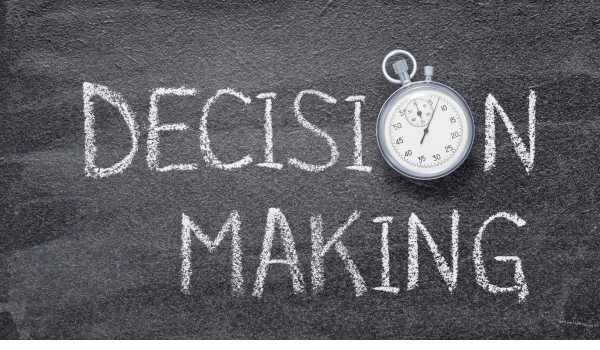Americans enjoy one of the safest water supplies in the world, but research is turning up some scary things.
From dangerous forever chemicals we didn’t know were in our water to drug residue and microplastics, emerging threats are on the horizon.
The only way to guarantee your family is safe without resorting to bottled water is to take charge of the filtration process, but should you buy a whole house or an undersink filter?
It’s tricky, so let’s take a closer look at both.
📝 Key Takeaways
- Whole house filters clean all the water entering your home.
- Undersink filters treat water at a single faucet — usually the kitchen sink.
- Whole house systems offer full-home protection but cost more upfront.
- Undersink systems are affordable and easy to install.
- You can combine both for the best of both worlds.
💧 Whole House vs Undersink Water Filters — Which One Is Right for You?

We all want safe, clean water at home — but with so many filter options, it’s hard to know where to begin. Two of the most common choices are whole house systems and undersink filters. Each has its perks, and the best one for you depends on your water quality, household needs, and budget.
Let’s break down the pros, cons, and key differences to help you make a confident decision.
🆚 What’s the Difference Between The Two
The main difference comes down to where the filtration happens.
- A whole house water filter (also called a point-of-entry system) connects directly to your main water line — typically where it enters your home. That means every tap, shower, and appliance benefits from filtered water.
- An undersink filter, or point-of-use system, is installed beneath your kitchen sink and only treats water coming out of that faucet. It’s mainly used for drinking and cooking.
Both types help remove contaminants — the real difference is coverage, capacity, and cost. We’ll dig into all of that in the sections ahead.
🏠 Why Choose a Whole House Water Filter?

Whole home water filtration systems treat every drop before it enters your home, offering protection and peace of mind across the board.
✅ Benefits include:
- Protects Plumbing & Appliances Hard water minerals, iron, and sediment can wear down pipes and damage water-using appliances over time. A whole house filter helps extend their lifespan.
- Reduces Cleaning Time Filtered water helps prevent stubborn limescale and rust stains, especially in bathrooms and kitchens — less scrubbing, fewer harsh cleaners.
- Safer Showers & Baths Chlorine and heavy metals can irritate skin, dry out hair, and trigger asthma symptoms. Filtration removes these threats before they hit your showerhead.
- Boosts Home Value A whole house system is a practical upgrade that’s attractive to future buyers — especially in areas with known water issues.
- Set It & Forget It Convenience Once installed, these systems run automatically in the background. No need to worry which faucet is safe — clean water flows from every tap.
Check out our top-rated whole house water filters »
🚰 Why Choose an Undersink Water Filter?
Undersink systems focus on filtering the water you drink and cook with — offering high-quality results at a lower cost.
✅ Benefits include:
- Budget-Friendly If you’re cost-conscious, undersink filters deliver powerful filtration at a fraction of the cost of whole-house systems.
- Top-Tier Contaminant Removal Smaller doesn’t mean weaker. Reverse osmosis undersink filters, for example, remove more contaminants than many whole home filters.
- DIY-Friendly Setup Many models install in under an hour with basic tools — no need to call a plumber or modify your home’s plumbing.
- Low Maintenance Cartridge replacements are simple and mess-free. No need to shut off water to your entire home.
- Perfect for Renters or Small Spaces Undersink filters don’t require major plumbing changes, and they’re easy to uninstall and take with you if you move.
- Great for Lead Got an older home with lead pipes? Whole house filters won’t catch everything. An undersink filter is your best line of defense for drinking water.
🧪 Testing Your Water First Matters

Before choosing any filtration system, you need to know what’s in your water. Not all filters target the same contaminants — and guessing could leave you underprotected.
While PFAS and heavy metals are big concerns, microplastics are becoming an emerging threat in drinking water. Filtering out these plastic particles can make a noticeable difference in water quality.
City Water?
Check your annual water quality report. It’ll tell you what’s regulated and what’s monitored — including common contaminants like:
- Chlorine & chloramine
- Lead
- Fluoride
- Trihalomethanes
- PFAS
- Industrial chemicals
- Microplastics
- Drug residues
On a Well?
You’re responsible for testing. And while you don’t have disinfectants like chlorine, you may face higher risks from natural or environmental pollutants like:
- Arsenic
- Uranium
- Bacteria
- Nitrates
🧾 The Bottom Line:
A good test helps you choose the right filter the first time. DIY kits are available, but we recommend certified lab testing for the most accurate results.
👉 Check out our favorite water test kits here »
🛡️ Combining Filters for Maximum Protection

Can’t decide between a whole house system and an undersink filter? Good news — you don’t have to.
Here’s the trick:
Pairing both gives you the best of both worlds. A whole house filter takes care of water coming into your home — great for showers, laundry, and appliances. An undersink system (like reverse osmosis) tackles what really matters at the tap — your drinking and cooking water.
💧 Why this combo works:
- Whole House Filter: Handles large particles, sediment, chlorine, and basic contaminants.
- Undersink Filter: Polishes off what’s left — like lead, fluoride, and forever chemicals — for ultra-pure water.
It’s like having a defensive line and a goalie — layered protection without sacrificing pressure or quality.
🧠 Smart tip:
If you’re concerned about water pressure, a reverse osmosis system installed under the sink won’t slow down your shower — just your kitchen faucet.
🔍 Quality Counts – Testing and Filter Standards

🧪 Testing Matters
A cheap test that gives vague results? Not worth your time. When it comes to water safety, accuracy is everything. Stick with certified drinking water labs for the most reliable insights. Services like TapScore by SimpleLab are a solid choice — they break down your results without lab jargon and even guide you toward the right filter. Just be cautious if you’re testing through a company that sells filters — you may get more pitch than help.
🛠️ Filter Performance
Marketing buzzwords can be misleading. There’s a big difference between a filter that removes “up to” 99% of contaminants and one that consistently removes 99% or more. If your water test shows high levels of harmful substances, those little details matter a lot.
🔒 Pro tip: Look for NSF-certified filters. These have been independently tested and verified to meet strict performance and safety standards — no fluff, just facts.
Final Thoughts
Whether you want to save the planet by reducing your dependence on bottled water or safeguard your family’s health against the unexpected, home water filters are a safety net in a changing world.
 132 people found this helpful. Was this guide helpful to you?
132 people found this helpful. Was this guide helpful to you? 

